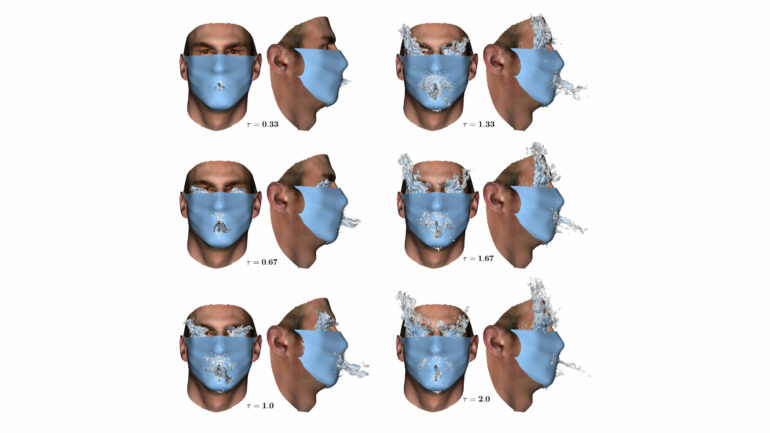In its updated guidance at the start of 2022, the U.S. Centers for Disease Control and Prevention said loosely woven cloth masks offer the least protection against COVID-19, and N95 and KN95 masks offer the most protection. Still, after more than two years since the pandemic began, there is not a full understanding of mask characteristics for the most optimal protection.
In Physics of Fluids, researchers at Florida State University and Johns Hopkins University use principal component analysis (PCA) along with fluid dynamics simulation models to show the crucial importance of proper fit for all types of masks and how face shape influences the most ideal fit.
The study suggests double masking with improperly fitted masks may not significantly improve mask efficiency and produces a false sense of security.
More layers mean a less porous face covering, leading to more flow forced out of the perimeter gaps (sides, top, and bottom) in masks with a less secure fit. Double layers increase filtering efficiency only with good mask fit but could also lead to breathing difficulties.
The researchers modeled a moderate cough jet from a mouth of an adult male wearing a cloth mask over the nose and mouth with elastic bands wrapped around the ears. They calculated the maximum volume flow rates through the front of mask and peripheral gaps at different material porosity levels.
For a more realistic 3D face shape and size, the researchers used PCA that integrated 100 adult male and 100 adult female heads


